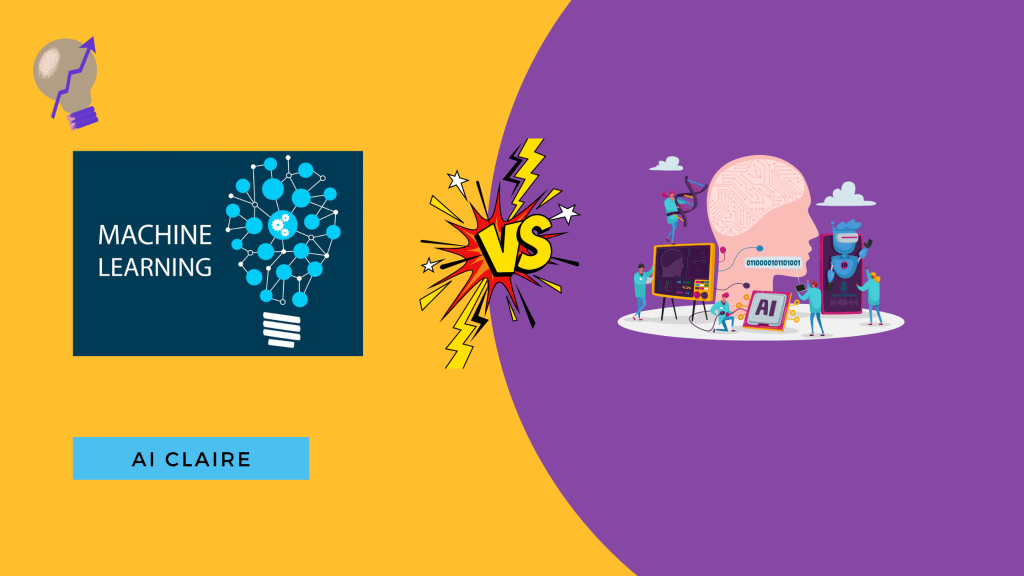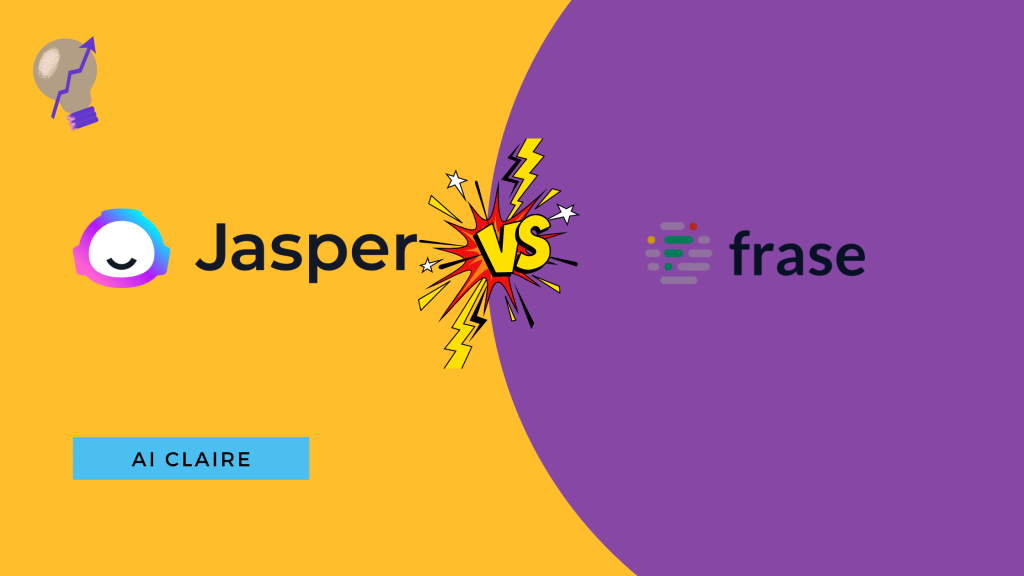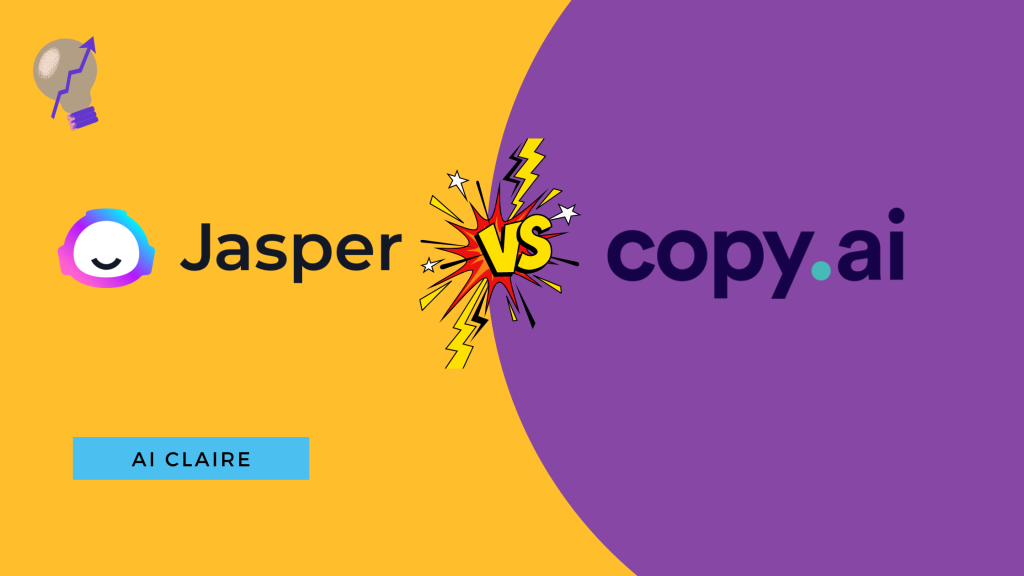Machine learning (ML) and artificial intelligence (AI) are popular technologies used to create intelligent systems. They are used to develop innovative solutions across various industries, from healthcare and marketing to customer service and cyber-security.
Both are synonymously used and closely related but are different from each other. In this blog post, we will dive into the similarities and differences between these two technologies. We will also discuss how they are being used in various industries today.
What is Artificial Intelligence (AI)?
Artificial intelligence is a branch of computer science that builds systems to mimic human cognitive abilities such as learning, problem-solving, and decision-making. It uses mathematical and logical algorithms to analyze large data sets, learn new information, and make decisions.
Artificial intelligence is used in many smart devices and voice assistants like Google Assistant and Siri. Systems made with AI can understand natural language, images, and videos and make decisions accordingly.
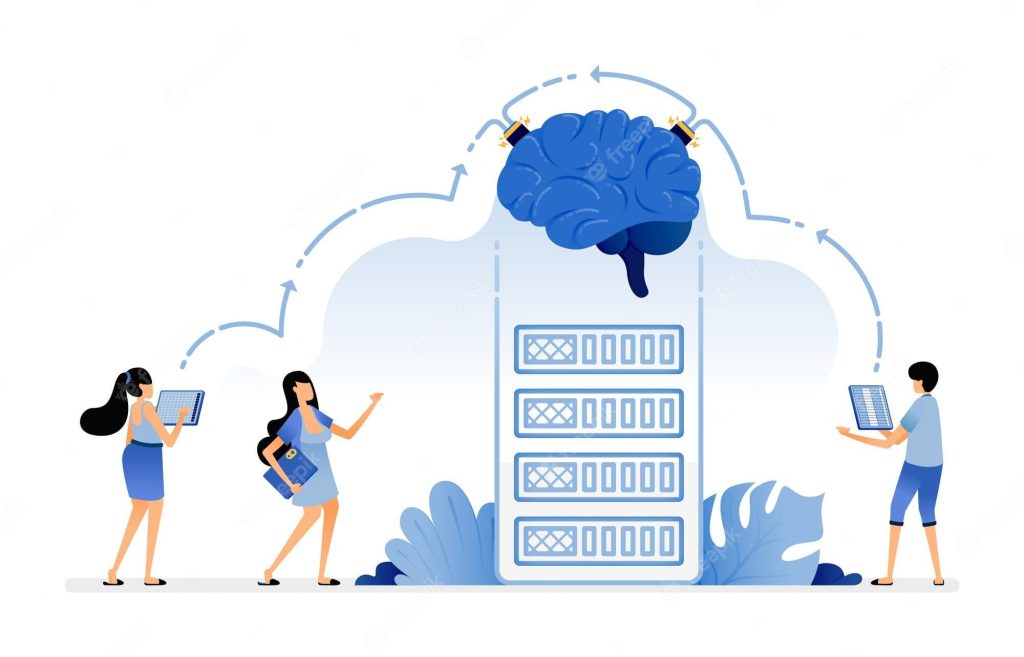
AI has a wide range of applications across many industries including marketing, healthcare, finance, customer service, and so on. For example, Jasper AI is a popular marketing tool that is used to create content with a human touch. Replika is another example that uses an AI chatbot feature to talk to its users through human-like conversations.
Overall, AI is a powerful technology that has the potential to revolutionize the way we live and work. It is making machines and systems smarter, more efficient, and more capable than ever before.
Advantages of Artificial Intelligence
- All the decisions made by AI are previously gathered based on algorithms. This reduces errors to a significant level.
- Humans are available to support customers for only a few hours. But AI support is available 24X7. It can work without taking breaks.
- When AI robots do the work for us, we don’t need to perform risky tasks ourselves. We can leave the hard work for AI to complete.
- Unlike humans, AI provides unbiased decisions.
Disadvantages of Artificial Intelligence
- Artificial intelligence can cost a fortune. Creating intelligent systems with human cognitive abilities is not a very easy task. Therefore, hiring programmers to do the job can be very costly for businesses.
- Unemployment has increased because AI systems have replaced humans in their occupations.
- AI systems are emotionless. While they may excel in many tasks, they cannot replicate the human connections vital for successful teamwork.
- As AI advances, there are concerns that it could become uncontrollable and may pose a threat to humanity, a scenario known as the AI singularity.
What is Machine Learning (ML)?
Machine learning is a subset of artificial intelligence. It uses algorithms and statistical models so that computers can learn from data without being programmed. It is a method of teaching computers to learn from experience and improve their performance over time.
Machine learning can go beyond mimicking human intelligence. It can create new forms of intelligence that can assist humans in decision-making, problem-solving, and many other dynamic activities.
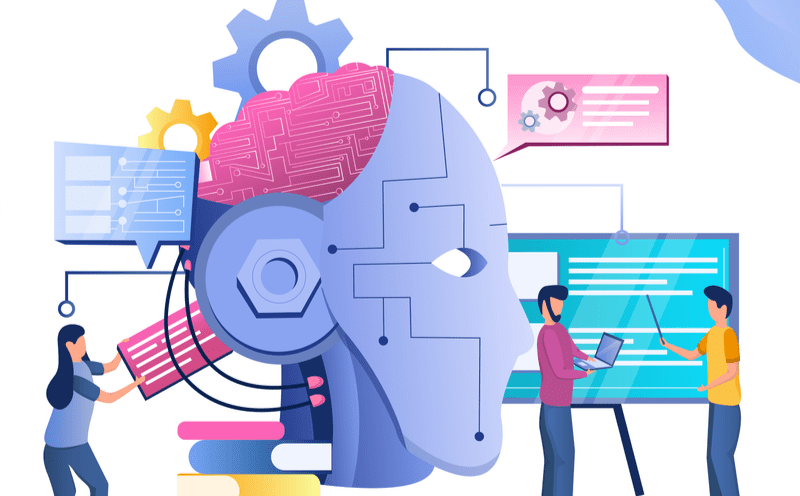
Machine learning helps in developing intelligent systems such as self-driving cars, speech recognition software, and personalized recommendation systems. Google uses ML to provide a personalized experience to its users. Instagram also uses the same model to entertain its users.
Various anti-virus programs available in the market also work on machine learning. They learn to filter the threats and spam in a system as they acquire new information.
We can analyze and make predictions based on large sets of data through machine learning. We can make our machines and systems smarter, more efficient, and more capable than ever before.
- Machine learning systems keep improving as they gain experience. Their accuracy and efficiency increase continuously.
Advantages of Machine Learning
- It identifies new trends and patterns on its own. This is done by reviewing large amounts of data in less time which is physically impossible for humans to do.
- Human intervention is not needed in machine learning. The systems learn and improve on their own.
- Systems based on ML can work well in novel or uncertain situations.
Disadvantages of Machine Learning
- Machine learning models can create a bias if the data used to train them is not diverse or representative. Using a small, biased data set can result in inaccurate predictions.
- Machine learning requires a significant amount of data and domain knowledge to be effective. This can be a barrier for some organizations.
- As machine learning relies on the use of large amounts of data, there are concerns about data privacy and the potential for misuse of personal information.
- There are chances of errors in machine learning systems.
Differences Between Artificial Intelligence and Machine Learning
| Artificial Intelligence | Machine Learning |
| AI is the branch of computer science that aims to create intelligent machines, systems, and programs. | ML is a subset of artificial intelligence that involves the development of algorithms and statistical models. |
| AI systems can mimic human cognitive functions. | ML models can learn from past data and improve their performance over time. |
| The popular AI systems are Siri, Google Translate, and Chat-GPT. | Machine learning systems are mainly used to perform simple tasks such as image classification and data analysis. |
| AI performs specific tasks that it’s programmed for. | ML can learn from experience and adapt on its own. |
| AI can work with any kind of data – structured, semi-structured, and unstructured. | ML can work only with semi-structured and structured data. |
| AI systems can take actions based on the data they have processed. | Machine learning systems are mainly used to analyze and make predictions based on data they have processed. |
| AI systems can do specific tasks. | ML systems are designed to perform a wide range of tasks for which they have been trained. |
| There are two categories of AI– weak AI and strong AI. | ML can be divided into three categories – reinforcement learning, supervised learning, and unsupervised learning. |
| The popular AI systems are Siri, Google translate, and Chat-GPT. | The popular machine learning models are Google, Facebook, and Instagram’s search algorithms. |
Similarities Between Artificial Intelligence and Machine Learning
Artificial intelligence (AI) and machine learning (ML) are branches of computer science that can create intelligent machines and systems. They use mathematical and logical algorithms to process and analyze large sets of data.
Both AI and ML are used to develop intelligent systems and virtual personal assistants such as self-driving cars, speech recognition software, personalized recommendation systems, chatbots, and intelligent agents.
They are used to develop systems that can understand and respond to natural language, speech, images, and videos. Further, they are used in various industries such as healthcare, marketing, finance, transportation, and manufacturing to solve complex problems and improve efficiency and productivity.
Applications of Artificial Intelligence and Machine Learning
Here are the applications of AI and Machine Learning in different industries.
Healthcare
Healthcare organizations use AI and ML in medical imaging, diagnosis, predictive analysis, robotic surgery, drug discovery, and many other areas. They have also helped in the early detection and personalized treatment plans of many terminal diseases.

Business
Businesses worldwide have fully automated themselves with artificial intelligence and machine learning. They use it to improve efficiency, increase revenue, and gain a competitive advantage over other businesses. AI and ML help in fraud detection, customer support, risk management, supply chain management, marketing, and predictive analysis.

Marketing
AI and ML are used in marketing to create personalized offers, predict customer behavior, virtual assistants, content creation, and sales forecasting. Social media marketing and email marketing are also optimized to create better campaigns.

Cyber Security
AI and machine learning help businesses and organizations improve security, detect and prevent cyber-attacks, and protect sensitive data from hackers. They help in phishing detection, malware detection, vulnerability management, network security, and intrusion detection and prevention. AI can automate incident response and management processes, allowing faster and more effective responses to cyber-attacks.

Customer Service
AI and ML can help in sentiment analysis, troubleshooting, quality assurance, issue tracking, and problem resolution. Chatbots like Wati and Netomi use artificial intelligence to solve customer queries through a personalized experience. Alexa by Amazon uses machine learning to interact with customers and provide a better buying experience.

Final Thoughts: Machine Learning vs AI
Artificial Intelligence and Machine Learning are becoming increasingly prevalent with applications in various industries such as marketing, customer service, healthcare, finance, and transportation.
The main difference between the two is that AI can be programmed to perform a specific task, while ML allows machines to learn and adapt on their own. But both are powerful technologies that have the potential to revolutionize the business world.
These technologies have the capability to bring significant benefits like increased efficiency and improved decision-making. But they also bring concerns pertaining to their impact on employment, privacy, and ethical considerations.
It’s important to consider these issues and create a balance between using the benefits of AI and ML and minimizing the potential negative effects.

